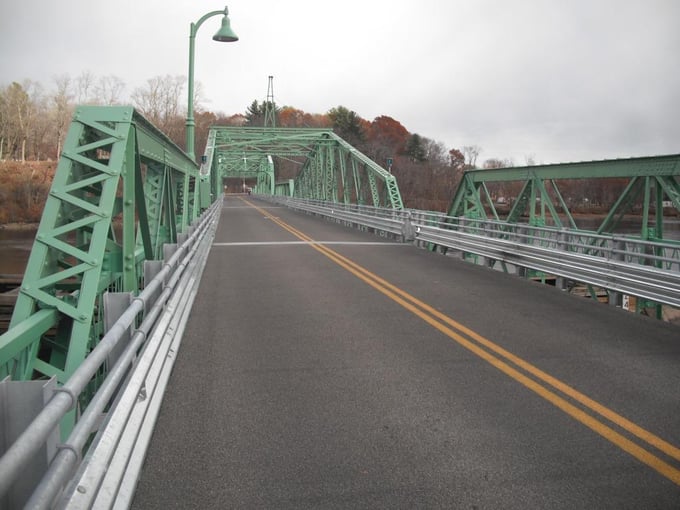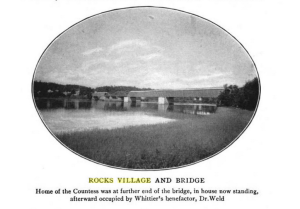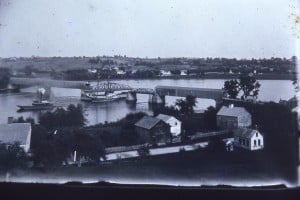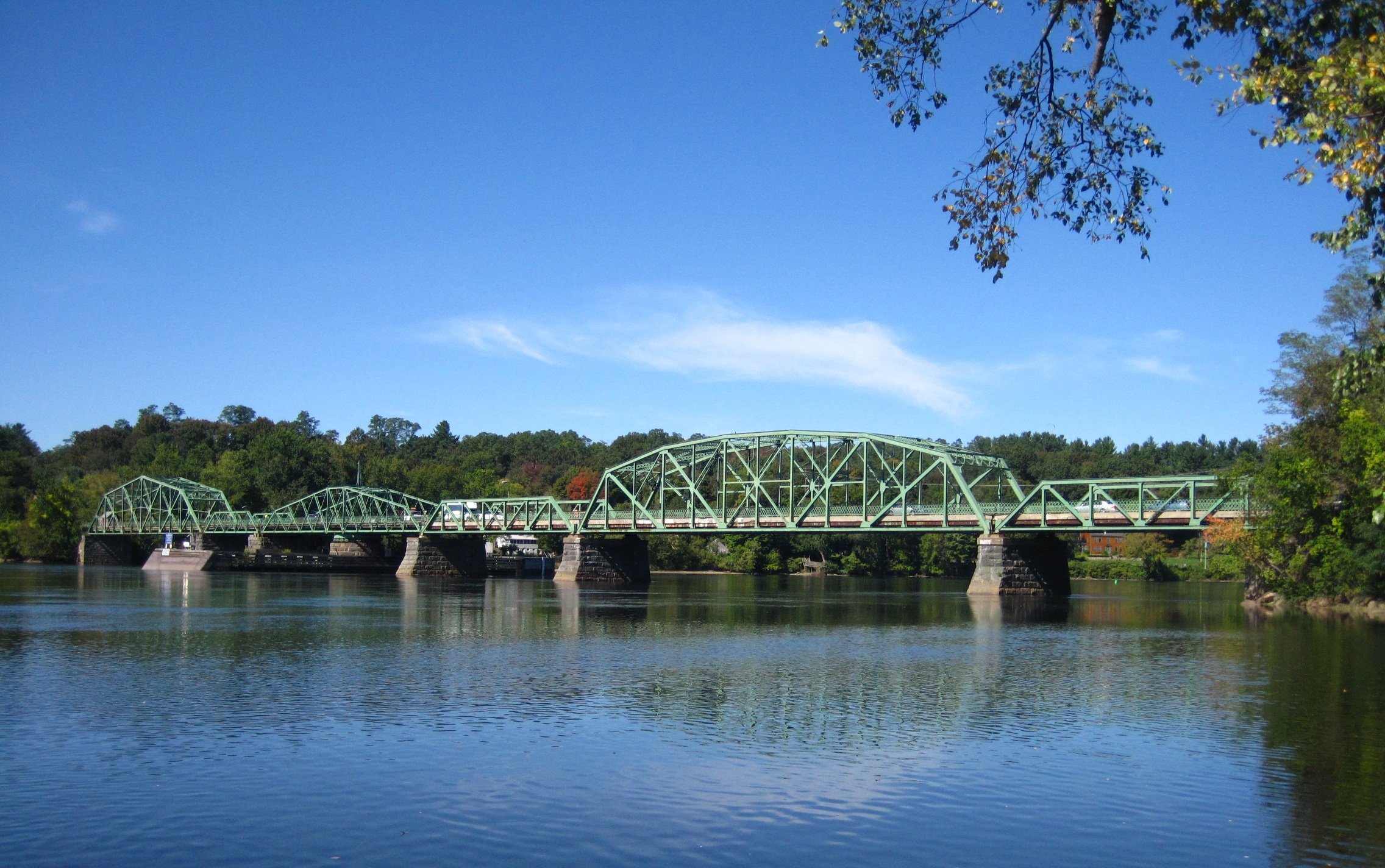
Shortly after the American Revolution ended, in 1794, the first bridge at Swett’s Ferry across the Merrimack River was built. The wooden bridge allowed Bay Staters a simpler alternative to a ferry crossing and its 30-foot draw permitted ships to pass. Over the next almost century, the bridge was repaired and restored, and in 1883, a manually operated iron swing replaced the draw, and between 1894 and 1915, metal spans replaced the covered wood structure.
The Rocks Village Bridge has a history nearly as old as our country. The Massachusetts Department of Transportation (MassDOT) didn’t want to tear down part of its history when the bridge became unsafe for modern transportation.
 Fiber Reinforced Polymer (FRP) bridge decking by Creative Composites Group (CCG) strengthened this steel-truss bridge while maintaining its historic appearance and without adding undue weight to the structure.
Fiber Reinforced Polymer (FRP) bridge decking by Creative Composites Group (CCG) strengthened this steel-truss bridge while maintaining its historic appearance and without adding undue weight to the structure.
Photo: Historical Bridge circa 1830 from RocksVillage.org
Photo Credit: Whittier-Land by Samuel Thomas Pickard, 1904
A Special Historic Case
The last modern repair to the Rocks Village Bridge was in the early 1900s. The bridge was long overdue for restoration. But many parts of the bridge would need to be creatively modernized to account for changing conditions without altering the historical structure.
The bridge’s wood decking was one challenge. Wood and metal deteriorate when constantly exposed to even normal water, and the water conditions of the Merrimack River are comparatively harsh for a freshwater body. This means a major maintenance headache for a bridge that connects two communities and must support schedule-bound traffic like school buses.
Another limitation was weight capacity. Over the last century, cars, trucks and the loads they carry have gotten increasingly heavier. But in 1973, the Department of Public Works acknowledged that the current bridge capacity was a relatively low 10 tons.
 A truss bridge design can handle only so much weight. This meant that every structural element added would subtract from the bridge’s capacity for the cars and trucks using this essential thoroughfare – especially at the swing span section.
A truss bridge design can handle only so much weight. This meant that every structural element added would subtract from the bridge’s capacity for the cars and trucks using this essential thoroughfare – especially at the swing span section.
Photo: Bridge circa Late 19th Century from RocksVillage.org
Photo Credit: Rocks Village Archives
FRP: The Solution Below the Surface
MassDOT’s research revealed that FRP was the right material to provide the strongest bridge decking at the lightest overall weight. They approached CCG in 2013 to take on the project.
At the time, Rocks Village was almost twice the size of the largest bridge decking project CCG had completed. This larger amount was no trouble: FRP is pultruded, so producing large quantities of consistent quality is both simple and fast. In short order, CCG had produced decking to cover Rocks Village’s almost 19,000 square feet. This bridge remains the largest FRP bridge decking project of any steel truss bridge in the United States.

The FRP decking provides the Rocks Village Bridge with a solid deck, covered with a polymer aggregate wear surface, which simulates asphalt at a much lighter total weight. CCG worked with MassDOT to create a pointed “crown” in the center of the decking to allow precipitation to flow back into the river. They also collaborated on the specialty swing span design and on the structured guardrails.
Since its installation in 2013, the FRP decking on the Rocks Village Bridge has required no maintenance. The bridge decking required one repair after a traveler dragged a metal dumpster across much of the bridge’s length. CCG’s team in Augusta, Maine, was onsite within a week, and the repair was completed within hours. FRP’s low weight and fast production allow CCG to respond very quickly to emergency situations and help get travelers back on their routes faster.
FRP bridge decking by CCG is ideal for restoration projects because of its light weight, inherent corrosion resistance and customization – all difficulties for wood, steel and concrete. Installing FRP decking “below the surface” requires no aesthetic changes to the piece of historic architecture to get the many benefits of long-lasting FRP.
Helping Restore History
The Rocks Village Bridge has been on the National Register of Historic Places since 1976, and it is the only remaining manually operated swing bridge in Massachusetts. CCG’s FRP bridge decking was one part among the many in this grant-funded bridge rehabilitation project. We’re proud that MassDOT trusts CCG with its citizens’ safety for the Rocks Village Bridge enough to choose CCG for a subsequent bridge project.
CCG is a consortium of family-founded companies, so the “people part” of the business is our specialty. We live for the stories behind the projects, which helps us excel at projects like the Rocks Village Bridge. Approaching our clients as partners helps us make their goals our goals and ensure the best outcome. The Restoration Stories series will feature four complicated historical cases where FRP was up to the challenge. Stay tuned for issue two in April 2023, and contact us to discuss the versatile, lightweight benefits of FRP.
